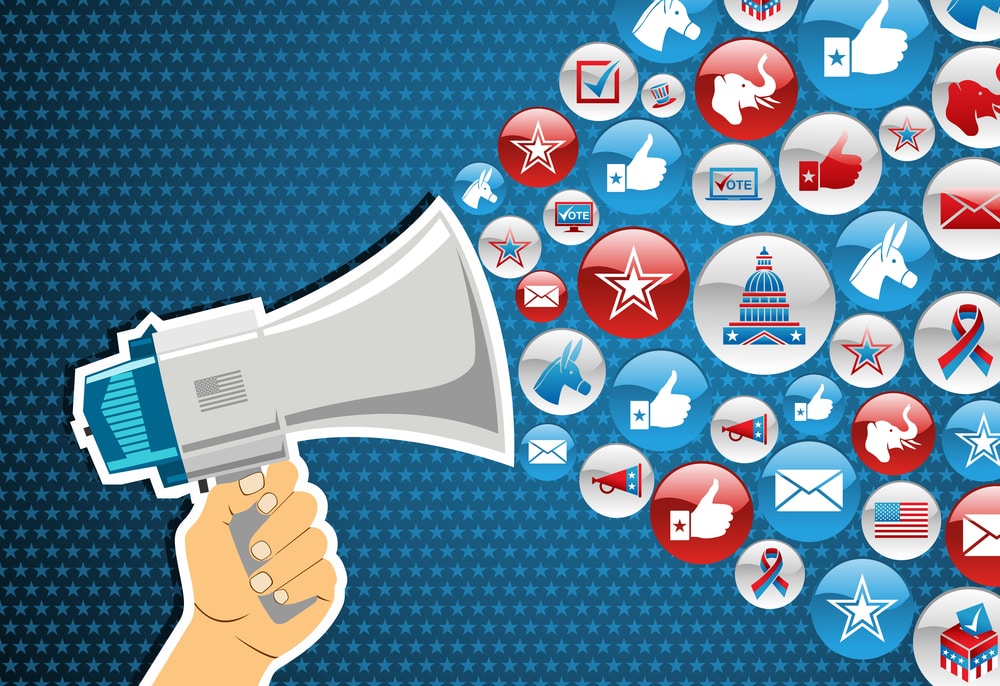It wasn’t that long ago that presidential candidates spent the majority of their pre-debate time perfecting their messages and worrying about which tie to wear. Now, they have one more concern to think about before the debate – maintaining a good social media presence. Twitter has emerged as one of the power players during this election cycle. From politicians to regular users, a broad range of people are using the network to get their political messages out to the masses. While this might be something new, it’s important to understand that it is the new normal, not an anomaly. Twitter has proven itself a force during this election, and it will undoubtedly continue to change the way politicians navigate the election season.
Cross-Party Debates
One of the most interesting aspects of Twitter is that it allows people to send out messages in real time, much like candidates do during a presidential debate. Because of that, candidates from other parties use the platform to join in on debates. This gives them a chance to stay in the news, even when they’re not the ones standing at a podium.
Bernie Sanders has done this better than anyone and even received a nice bump in Twitter followers because of it. In fact, he added over 5,000 followers to his Twitter account after live tweeting a debate using the hashtag #GOPDebate last December. That was more followers than any other candidate received during the debate.
He didn’t just stumble into this position by accident, though. He live-tweeted a debate last September as well. Using the hashtag #DebateWithBernie, he skewered his Republican opponents on the social media platform. At the same time, he reminded people what they would get with a Sanders presidency.
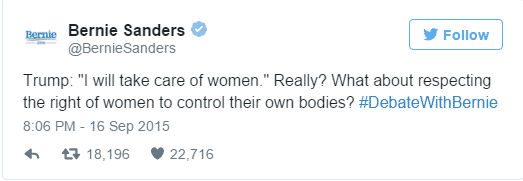
Of course, it wouldn’t be an election season without the other side taking swings as well. Prolific Tweeter Donald Trump stands out among the crowd of Republicans when it comes to live tweeting debates.

Trump manages to keep his Republican followers engaged during the Democratic debates, which is a great way for him to get coverage. In addition, it allows him to remind people that he is different from those candidates.
Soundbites
Politicians’ policies and beliefs are usually broken up into small soundbites. In the past, people would see the soundbites on the news, but now they’ve found new life, floating around Twitter during and after debates.
One example of this is the Democratic debate that took place in Des Moines, Iowa. NPR’s political team liveblogged the event and then took to Twitter to keep the conversion going. In doing so, the political team delivered some soundbites from the debate.
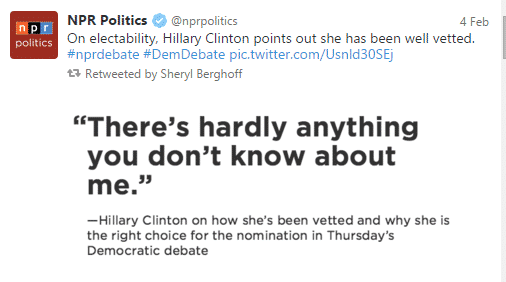
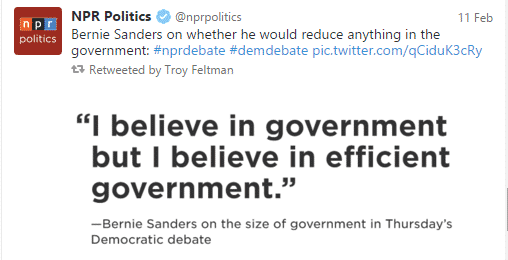
Twitter has proven that it is the perfect platform to deliver these soundbites to the masses. This is something that businesses can learn from as well. If they have a powerful soundbite, they should take to Twitter. They can get a lot of coverage when they use the platform. That coverage can turn into more followers – and more votes.
Everyone Joins in the Conversation on Twitter
In the past, debates were one-sided. Politicians got to stand up and say what they wanted to say, and everyone else got to watch. Twitter has changed that by turning regular people into active participants.
People take to Twitter to debate along with the politicians. This accomplishes two things. First, it gets the conversation going around certain issues, and second, it gives the politicians a better idea of where their followers stand. This helps them script their message.
Again, the same is true for brands. Whenever people talk about you, you can find out what they want. This is very powerful when creating the perfect marketing message and the right products.
From the Computer to the Moderator
Something else very interesting is happening in regard to Twitter and presidential debates. Sometimes, a person’s tweet ends up on the national stage.
Andy Grewal is an example of this. Grewal tweeted a reaction to one of Clinton’s statements during a debate in Iowa last November. Although he used the hashtag #DemDebate, he did not think that anyone of importance would see his tweet.
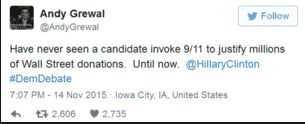
A mere eight minutes later, the debate’s moderator read the tweet and asked Clinton for her thoughts. While her apology wasn’t surprising, the fact that the tweet was read at all is. This was a watershed moment for social media and live events. It bridged the gap between the two and showed that it is possible to create a fluid experience between the online and offline worlds.
While some people feel that this year is just politics as usual, Twitter proves that is not the case. The social media network is changing the way people and politicians interact in an election cycle. Twitter will likely cement an even stronger place in politics as it continues to evolve.
